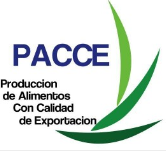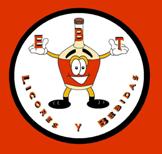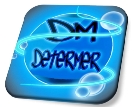Retando lo que asumimos
Videos
-
 Enmarcando y reenmarcando problemas (subtítulos en inglés)
Enmarcando y reenmarcando problemas (subtítulos en inglés)(~3 minutes)
-
 Retando lo que asumimos (subtítulos en inglés)
Retando lo que asumimos (subtítulos en inglés)
(~3 minutes)
Conceptos Claves
Enmarcando y reenmarcando problemas
Herramientas para cambiar los puntos de vista
Ir más allá de la primera respuesta
Lineamientos para realizar tormentas de ideas
Tarea
Lectura
Esta tarea se enfoca en ir más allá de las primeras respuestas y llegar a las que realmente son ideas innovadoras. Una de las mejores formas de hacerlo es con una tormenta de ideas efectiva. A continuación se encuentra un segmento del libro inGenius con un conjunto de lineamientos para realizar tormentas de ideas. Por favor lee cuidadosamente antes de realizar la tarea.
What does the room look like in advance?
Brainstorming is much like a dance, and similar to dancing you need the proper space to encourage a fluid brainstorming process. First, there has to be room for people to move around. in addition, just like dancing, brainstorming needs to be done standing up. This point is not trivial. By standing up instead of sitting, the group is much more energetic and engaged. Standing also allows for quick changes in the flow of people and ideas.
You also need space to capture all the ideas along the way. Keep in mind that the larger the space for ideas, the more ideas you will get. In fact, when you run out of space, you often run out of ideas.
Who should participate?
Choosing brainstorming participants is critically important. it is not good enough to randomly scoop up a few people and bring them in to brainstorm. You need to be very thoughtful about who is in the room. The people invited to a brainstorming session should have different points of view and expertise on the topic. Keep in mind that this is not the same group of people who will make the final decisions at the end of the brainstorming session. If you are going to design a new car, for example, you need to include people with different perspectives and knowledge about cars. These might include the engineers who will build it, the customers who will buy it, the salespeople who will sell it, the mechanics who will repair it, the valets who will park it, and so on. These folks don’t get to make the final decision about the car design, but their points of view and ideas are incredibly valuable.
What is the brainstorming topic?
The framing of the topic is a critical decision. If you make the question too broad—“how can we solve world hunger?”— then it’s hard to know where to start. If you make the topic too narrow—“What should we have for breakfast?”—then it is too limited. Finding the right balance is important. Recall the earlier session on framing problems. The question you ask is the frame into which the solutions will fall. So make sure that the frame is appropriate, leaving lots of room for the group’s imagination to roam. A provocative or surprising question is usually the most generative. For example, instead of asking, “What kind of party should we have for Mike’s birthday?” you can ask, “What is the most fanciful birthday experience we could create for Mike?” A small change in the way you ask the question dramatically changes the tone and scope of the answers.
What else should be in the room?
It is helpful to fill the room with things that will stimulate the discussion. For example, if you are brainstorming about the design for a new pen, then you should have lots of different writing instruments, as well as interesting gadgets and toys to spark your imagination. You need to have paper and markers for everyone. It is also incredibly helpful to have other simple prototyping materials, because you will want to mock up a quick example. These include tape, scissors, cardboard, rubber bands, and so forth. Many people “build to think.” The act of creating a quick example with simple materials actually helps the thinking process. And a three-dimensional prototype often communicates much more than words or a two-dimensional drawing.
What are the rules of brainstorming?
Real rules exist for effective brainstorming—the most important of which is that there are no bad ideas. This means that the participants aren’t allowed to criticize ideas. In fact, no matter how strange the idea, your job is to build on it. The key is to embrace all ideas that are generated and to work with them for a while. Brainstorming is a way to explore all the possibilities, whether they are inspiring or insipid. This is the “exploration” phase of a project, which needs to be distinguished from the “exploitation” phase, where decisions are made and resources are committed. There should be a clear wall between these two phases, so that your group doesn’t fall into the trap of eliminating ideas too early. This is the biggest challenge for most people—they feel a need to evaluate ideas as they are generated. This alone will kill a brainstorming session.
It is also important to encourage wild and crazy ideas. Even though they may seem strange, there may be a gem hidden inside. The key is to generate as many ideas as possible. Give yourself a goal, such as coming up with five hundred new flavors of ice cream. Once you have come up with three hundred, you know that you only have two hundred to go. It is important to remember that each idea is a seed that has the potential to grow into something remarkable. If you don’t generate those ideas, then like seeds that have never been planted, no amount of time and tending will yield fruitful results. And the more ideas you have, the better. Just like seeds, you need a large number in order to find the ones that have the greatest promise.
One way to break free from expected ideas is to encourage silly or stupid ideas. I often ask students to come up with the worst ideas they can during a brainstorming session. This unleashes ideas that would never have surfaced if they only focused on their best ideas. When people are asked to generate bad ideas, they defer judgment and push beyond obvious solutions. In fact, the craziest ideas very often turn out to be the most interesting ones when looked at through the frame of possibility.
What is the brainstorming process?
Once you have the right space, people, and question, and have reminded everyone of the rules, your goal is to make the process as fluid as possible. Only one conversation should be happening at a time, so that everyone is in sync. Along the way, you are going to want to challenge participants to look at the problem from different points of view. One approach is to remove the most obvious solutions from the pool of possibilities, so that you have to come up with something else. This forces you to tackle the challenge without the expected tool in your toolbox. For example, if you are brainstorming about ways to make it easier to park your car in a busy city, the expected answer is to add more parking spaces. If you eliminate that possibility, then other, less obvious answers will emerge.
During a brainstorming session, you should also throw out surprising and provocative prompts along the way that will help the group push past their assumptions. For example, if you are coming up with ideas for a new playground, you could ask how someone might design a playground on the moon or underwater. You could ask how you might design it one hundred years in the future or in the past. You could ask how a child would design it or someone with a disability. You could ask how you would design it with one dollar or with a million dollars. Or, you can solicit ideas for the most dangerous playground in the world. In fact, studies have shown that the farther away you get from your current place and time, both physically and mentally, the more imaginative your ideas. These prompts provide a convenient way to do this. In addition, it is important to build on other people’s ideas.
How much time does a brainstorming session take?
It is generally impossible to keep the energy needed for productive brainstorming going for more than about an hour. This means that there should be a clear limit to the amount of time you brainstorm. A flash brainstorming session of ten to fifteen minutes will work if all the participants know each other well and can quickly dive into idea generation. A longer session of forty-five to sixty minutes yields the best results.
What do you do when you are done?
The final step is to capture all that happened. Take photos of all of the ideas, make notes about the best ones, and save all the materials that can be saved. They are the valuable products of the brainstorming session. The person or team who is in charge of making the decisions about the project can mine this massive collection of diverse ideas and decide which ones to pursue. These materials can be revisited at any time in the future. As time goes by, some of the ideas that seem impractical might look promising.
Done well, brainstorming allows you to tap into your imagination to challenge assumptions and to push beyond obvious answers to generate truly unique ideas. The more you practice, the more fluid your brainstorming becomes, and the more diverse the ideas you and your team generate.
Tarea
INGENIEROS AL RESCATE!
Esta es una tarea de tres semanas.
La segunda parte sera publicada la semana que viene.
Esta primera semana tu equipo enmarcará y definirá claramente un problema que quieran resolver en la planta asignada. Puede ser por ejemplo aumentar la producción o hacer el proceso más “amigable” al ambiente. Traten de enmarcar el problema cuidadosamente, para que no sea muy reducido o muy amplio. Estén seguros de haber leído el párrafo en la parte superior acerca de como elegir un tema de tormenta de ideas, y mira el vídeo de reenmarcar problemas como una guía para esto.
Una vez que tu equipo ha enmarcado el problema, juntos deben realizar una tormenta de ideas para generar al menos 100 ideas de como FISICOQUÍMICA puede ayudar a resolver ese problema. Captura estas ideas y compártelas con la clase. Debes capturar de forma creativa las ideas y enviarlas al correo marquezronald.ula.ve@gmail.com antes del día sábado 31 de mayo a mediodía y publicarlas en el grupo de facebook el día sábado 31 de mayo después de mediodía. Esta es la segunda parte de la Tarea de Visitas de Planta y equivale a un 33% de la calificación, es una actividad en equipo, por lo tanto se realizará una publicación por cada equipo.
ADICIONAL:
Realizar un vídeo de máximo 2 minutos de duración en el que capturen de forma creativa el momento cuando están realizando la tormenta de ideas y publicarlo junto con las ideas en el grupo de facebook el día sábado 31 de mayo después de mediodía. Realizar el vídeo de forma creativa y publicarlo son dos puntos sobre la calificación del tercer examen, pueden subirlo a youtube o vimeo y publicar el enlace.
Recursos adicionales
REENMARCAR
EQUIPOS
Del curso “Creativity: Music To My Ears” de Tina Seelig

 orcid.org/0000-0001-6003-7487
orcid.org/0000-0001-6003-7487







 - ULA
- ULA Guia de Alta Montaña
Guia de Alta Montaña Industrial Chemistry – Texas A&M
Industrial Chemistry – Texas A&M Laboratorio FIRP
Laboratorio FIRP Materials Learning – Cambridge Univ.
Materials Learning – Cambridge Univ. Petroleum Refining – Colorado Univ.
Petroleum Refining – Colorado Univ. COLMEQUIM
COLMEQUIM BIOVEN
BIOVEN CARPA
CARPA GUMMYN
GUMMYN PACCE
PACCE PharmaQuim
PharmaQuim PRODELIM
PRODELIM WATERFRESH
WATERFRESH ALITOS
ALITOS Biocosmetiq's
Biocosmetiq's E.B.T. Bebidas y Licores
E.B.T. Bebidas y Licores GELES BETA C.A
GELES BETA C.A NatuVie
NatuVie Productos de Gel de Aloe Vera
Productos de Gel de Aloe Vera Determer
Determer PECTIPRODS Mérida
PECTIPRODS Mérida PETROING C.A.
PETROING C.A. Soft&Pure
Soft&Pure ALQUIVEN C.A.
ALQUIVEN C.A. Deshoil C.A.
Deshoil C.A. Ecopetroliq’s
Ecopetroliq’s Pequinoil S.A
Pequinoil S.A PetroCrack CA
PetroCrack CA Petrol C.A.
Petrol C.A. REFILUB
REFILUB